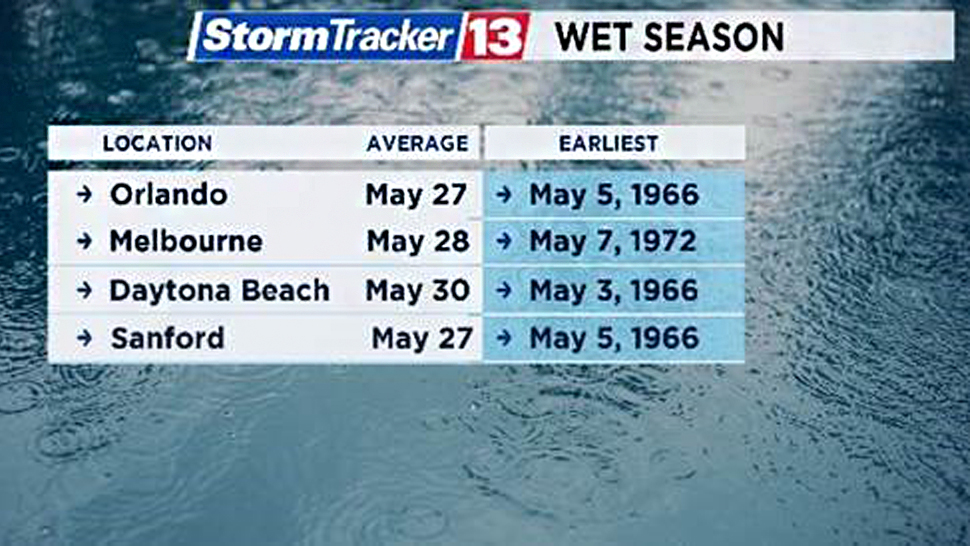CENTRAL FLORIDA — The rain has been coming down across Central Florida so far through mid-May. This rain is adding up quickly across the region.
- Some places like Orland, Melbourne and Sanford are wetter than average
- Learn more with Spectrum News 13's Weather Blog
Orlando, Melbourne, Sanford and Daytona Beach are all wetter than average. Check out these impressive rainfall totals compared to average for this May.

Orlando and Melbourne have been two of the wettest spots. Both have picked up more than 4 inches of rain, pushing the totals to more than 3 inches above average in Orlando while Melbourne is more than 4.5 inches above average for the month.
How does this compare to May of 2018 when rainy season started around Mother's Day?
While it is wetter than average this year, it does not even come close to the rainfall totals we saw in May of 2018.
It is interesting to note too that May of 2016 was also a fairly rainy month with wetter-than-normal conditions.
Here is a breakdown of the numbers for the past three Mays:
ORLANDO
- May 2018: 7.49"
- May 2017: 3.36"
- May 2016: 6.17"
May Average Rainfall: 3.45"
SANFORD
- May 2018: 10.46"
- May 2017: 2.91"
- May 2016: 3.52"
May Average Rainfall: 3.17"
MELBOURNE
- May 2018: 8.19"
- May 2017: 2.81"
- May 2016: 7.69"
May Average Rainfall: 3.29"
DAYTONA BEACH
- May 2018: 12.89"
- May 2017: 1.93"
- May 2016: 5.70"
May Average Rainfall: 3.13"
So do these recent rains mean that the wet season has started for Central Florida?
The short answer is no.
The reason, we are still seeing frontal boundaries move into Central Florida. These are not the classic cold fronts you remember from the winter and early spring where they would bring in cooler temperatures. Instead, they are boundaries between moisture and dry air.
These recent fronts are acting as trigger mechanisms for scattered rain and thunderstorms this month.
The most recent front is bringing in dry air and shutting down our rain chances for a few days. This does not happen during rainy season.
Each afternoon and evening during wet season, the storms are driven solely by heat, humidity and the collision of the sea breezes and not frontal boundaries.
Once these fronts stop moving in and the drier air stops returning to Central Florida, then rainy season will begin.
Climatologically, wet season does not begin until late May, but like last year and some of the years prior, it can start earlier.
Here is a look at the normal start of rainy season versus the earliest start to a wet season on record for Orlando, Melbourne, Daytona Beach and Sanford.




